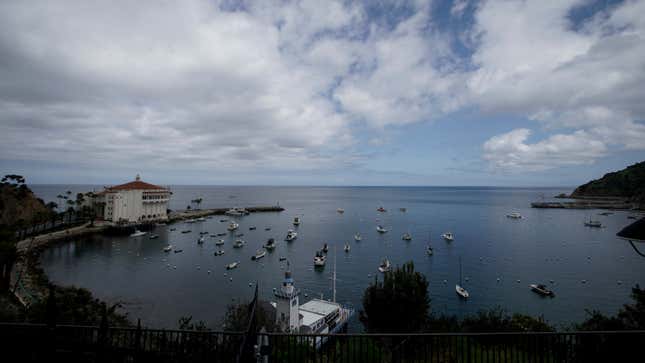
A research vessel launched this week is on an urgent mission to map out damage from a long-overlooked crisis on the ocean floor, and they’re putting robots to work to help.
In October, people living on Santa Catalina Island, which sits 22 miles (35 kilometers) off the coast of Southern California, were shocked to learn from a Los Angeles Times investigation that a scientist had found leaking barrels of dangerous waste strewn across the ocean floor. Residents had heard rumors that the nation’s largest DDT manufacturer, which was based in Los Angeles until 1982, had disposed of some of its waste product near the island, and a huge Superfund lawsuit in 2000 had confirmed the company had disposed waste into sewers that ran into the ocean. But records unearthed by the Times confirmed that the manufacturer had filled up a ship with barrels of DDT-tainted waste and dumped it off the coast once a month for almost 40 years, something unaddressed in the Superfund lawsuit.
If DDT sounds familiar to you, it’s the subject of the book that many credit with starting the environmental movement. Rachel Carson’s Silent Spring published in 1962 with DDT as its villain, and the book kicked off a national conversation about how pesticides impact the environment. Following the outcry, DDT was banned in the U.S. in the mid-1970s. While it was a popular pesticide for a few decades, there’s good reason DDT was banned. The moderately toxic substance could work its way up the food chain and has been linked to a host of health problems in humans and animals. It can be especially toxic in marine environments, which is bad news for the area around Santa Catalina Island where as many as half a million of barrels tainted sit on the bottom of the sea.
So how do you start cleaning up leaking barrels of toxic DDT-laced sludge? Send in the robots. A research boat staffed with a crew and two scientists set off this week on a two-week trip to assess the extent of the damage from the DDT barrels. Eric Terrill of Scripps Institution of Oceanography, who is spearheading the cleanup efforts, described the robots to the Los Angeles Times as “underwater Roombas,” which is very cute. These little buddies are tricked out with sonar equipment that will help them collect data from the ocean floor. Suddenly your robotic vacuum is looking a little less cool.
The robot’s purpose isn’t to vacuum, though, but to survey the area littered with barrels of potentially toxic waste. Over the next two weeks, the aquatic robotic explorers will run between 12 and 16 hours a day, mapping out the ocean floor to ascertain the barrels’ location and pinpoint areas for future study.
They’re working overtime for a reason: The scientific community and policymakers have united surprisingly quickly to figure out the extent of the damage on the ocean floor since the Times report was published in October.
“Here’s a real need to look at the extent to which these materials, the DDT in particular, are working their way back into the active biosphere,” University of California, Barbara researcher David Valentine, whose findings sparked the Times investigation, said. “We’re not there yet, because we don’t understand the distribution.”
But thanks to the robots mapping the deep, scientists could get one step closer to deploying Roombas or whatever it takes to clean up the toxic mess.